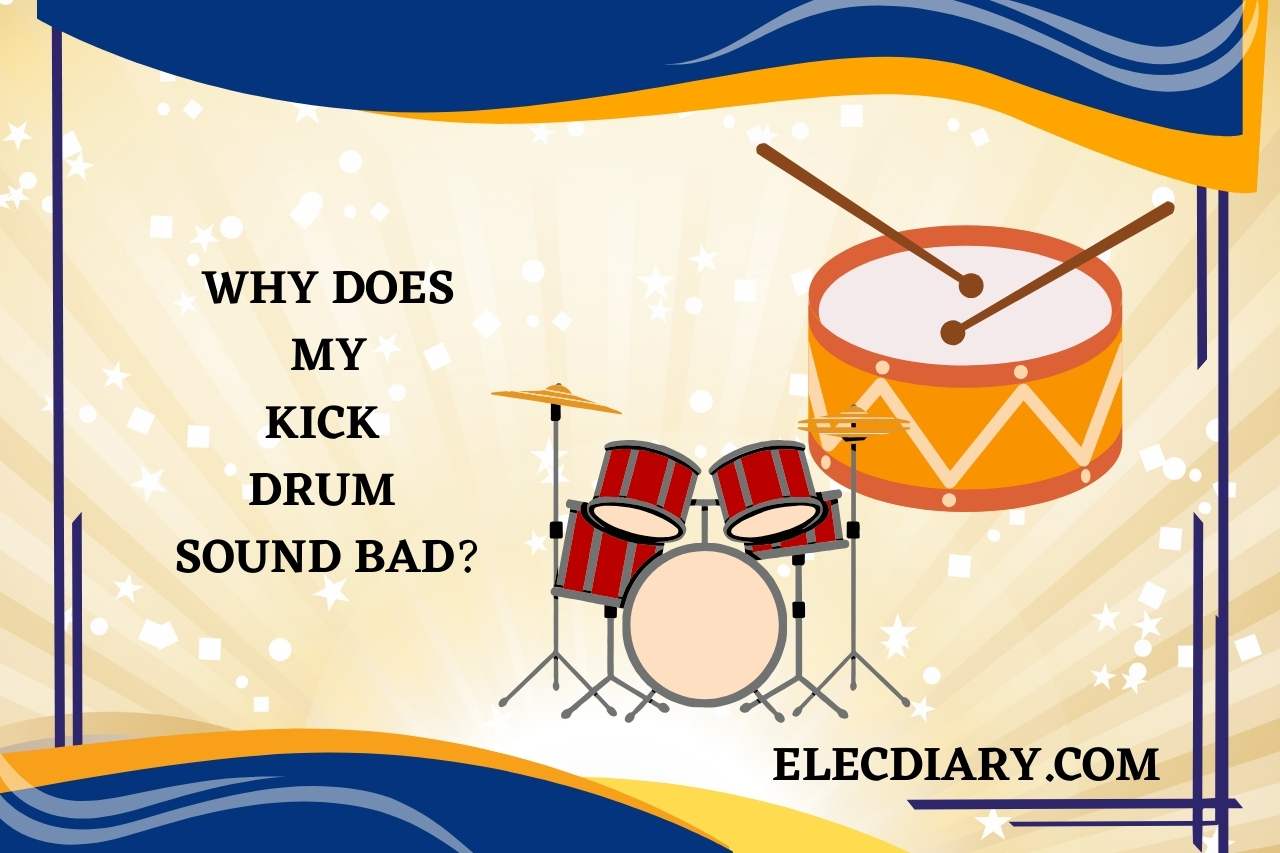Why does My Kick Drum Sound Bad? (Common Issues & Fixes)
“Why does my kick drum sound bad?” In fact, this common question plagues many drummers, from the acoustically frustrated to the beat-obsessed. However, if you know the underlying causes behind this issue, fixing it is as simple as beating your drum! Within this exploration, we’ll kick into the heart of drum dynamics, addressing tuning techniques, skin selection, and the impact of acoustics. So, we’ll ensure your kick drum not only finds its rightful place in the mix but also delivers that chest-thumping presence every drummer craves. Then, get ready to fine-tune your drumming experience and banish bad beats for good!
Why does My Kick Drum Sound Bad?
Your kick drum can sound bad due to problems like improper tuning, unsuitable drumhead selection and more. Understand each cause with this comprehensive breakdown.
- Improper Tuning: A kick drum that isn’t tuned correctly can sound flat or have an indistinct pitch, lacking punch and clarity.
- Unsuitable Drumhead Selection: Using a drumhead that’s not compatible with the desired music style can result in a sound that’s too dull or too ringy.
- Poor Damping: Insufficient or excessive damping can lead to an overly boomy sound or an unwanted ringing after each beat.
- EQ: If you have to adjust the EQ properly, it can affect the sound quality of your drum.
- Damaged Hardware: Worn-out tension rods, hoops, or other hardware can prevent the drum from maintaining proper tension. As a result, there will be an inconsistent tone.
- Suboptimal Beater: The beater used can affect the sound; a beater that’s too hard or too soft may not provide the right impact for a good kick sound.
- Inadequate Drum Placement: Correct positioning is also important. In case the kick drum is incorrectly placed relative to microphones or in the room, it can cause phase issues or poor sound capture.
- Room Acoustics: The room where you play can greatly influence the sound, potentially causing echoes and resonances that make the drum sound muddy.
- Environmental Factors: Humidity and temperature changes can affect the drum’s material and tension, altering the sound unpredictably.
- Neglected Maintenance: Dirt, dust, and other debris can accumulate in and on the drum. Then, its natural tone and response will be different.
- Mismatch with Other Drums: If the kick doesn’t sonically match the rest of the drum set, it can stand out and sound off, even if it’s not inherently bad by itself.

How Do you Fix a Kick Drum That Sounds Bad?
To fix a kick drum that sounds bad, the first step is proper tuning. According to the causes we discussed above, we have listed each method to fix your drum.
- Retune the Drum: Adjust the tension rods until the drumhead has even tension all around. You can tap near each rod and listen for consistent pitch.
- Select the Right Drumhead: Choose a drumhead that suits your style; for rock, a thicker, muted head can provide a deeper thump.
- Optimize Damping: Experiment with damping techniques like using foam or a pillow inside the drum to control overtones and sustain.
- Acoustic Treatment: If room acoustics are an issue, you are advised to add rugs or acoustic panels to absorb unwanted reflections.
- Inspect and Replace Hardware: Check for and replace any damaged tension rods, hoops, or other parts to ensure proper drum tension.
- Choose an Appropriate Beater: Switch to a beater that complements your drum and style, felt for warmth, plastic for punch, or wood for attack.
- Adjust Drum Placement: Move the drum or microphones to find a position that captures the best sound, considering phase alignment. You have to do your own experiment to find the proper place.
- Control Environmental Factors: Store the drum in a stable environment away from extreme temperature or humidity changes.
- Regular Maintenance: Clean the drum regularly to prevent build-up that can dampen the sound. When not in use, cover the drum to protect it from dirt.
- Harmonize with Your Kit: Make sure your kick drum is in sonic harmony with the rest of your kit for a cohesive sound.
How Do you Make a Kick Drum Sound Punchy?
To make a kick drum sound punchy, start by selecting a beater and drumhead that provide a solid attack. There are more tips to learn, so keep reading!
- Right Kick Drum Sample: Make sure to choose the right kick drum sample that matches your track; be mindful of the root notes.
- Head Selection: Install a high-quality bass drumhead that’s designed for punch and durability, like a double-ply head with a built-in muffling ring.
- Beater Impact: You can use a hard beater, such as wood or plastic, to give a more pronounced attack.
- Tuning: Tune the batter head tighter for more rebound and a tighter sound while keeping the resonant head slightly looser for low-end punch.
- Microphone Technique: Position the microphone inside the drum, close to the beater, to capture the beater’s impact, using a microphone known for low-end response.
- Equalization: Boost around 80-100 Hz for low-end fullness and cut around 300-400 Hz to remove boxiness, adding a slight boost around 3-5 kHz for beater click if needed.
- Compression: Apply a compressor with a fast attack and release to control dynamics while emphasizing the transient. It will make the kick more consistent in the mix.
- Consistent Playing: Ensure your playing technique delivers a steady force to the pedal for a uniform sound.

What is the Ideal EQ for a Kick Drum?
The ideal EQ for a kick drum is determined according to the desired sound. If you set it correctly, it will enhance the punch, clarity, and presence within a mix. Follow these guidelines when you set the EQ.
- Low-End Power: Boost around 80-100 Hz to reinforce the fundamental tone, giving the kick weight and power.
- Muddiness Removal: Cut between 300-600 Hz to reduce muddiness and boxiness, ensuring a cleaner drum sound.
- Beater Attack: Enhance the click or beater attack by boosting slightly around 3-5 kHz, which adds definition to the kick.
- High-End Presence: A gentle boost around 8-12 kHz can add a sense of air or top-end presence, useful for more articulate genres.
Remember, EQ settings will vary depending on the drum, the room, the music genre, and the desired drum sound. Therefore, always use your ears and adjust in context to the mix, and consider the use of a spectrum analyzer for visual aid.
Watch this one,
Video Credits – Sounds Like A Drum
You May Also Like








